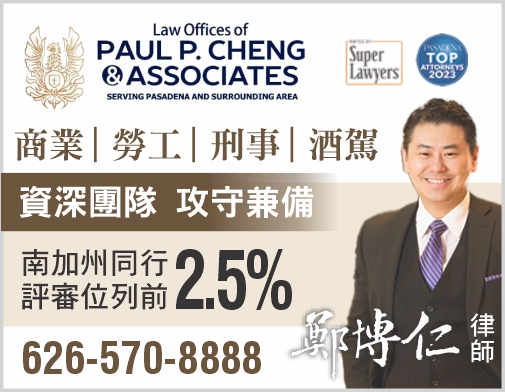U.S. CONSTITUTION GUARANTEES RIGHT TO BANKRUPTCY FOR FRESH START IN LIFE WITHOUT PRE-EXISTING DEBT & WILDLY SUCCESFUL PEOPLE WHO SOUGHT FRESH START WITH BANKRUPTCY
ARTICLE I, SECTION 8, of the United States Constitution authorizes Congress to enact “uniform Laws on the subject of Bankruptcies.” Under this grant of authority, Congress enacted the “Bankruptcy Code” in 1978 and 2005. The new Bankruptcy Code, which is codified as title 11 of the United States Code, has been amended several times since its enactment. It is the uniform federal law that governs all bankruptcy cases.
The Federal Rules of Bankruptcy Procedure (Bankruptcy Rules) and Local Rules govern the procedural aspects of the bankruptcy process of each bankruptcy court. The Bankruptcy Rules contain a set of official forms for use in bankruptcy cases. The Bankruptcy Code and Bankruptcy Rules (and local rules) set forth the formal legal procedures for dealing with the debt problems of individuals and businesses.
There is a bankruptcy court for each judicial district in the country. Each state has one or more districts. There are 90 bankruptcy districts across the country. The bankruptcy courts generally have their own clerk’s offices.
The court official with decision-making power over federal bankruptcy cases is the United States bankruptcy Judge, a judicial officer of the United States district court. The judge is different from the bankruptcy trustee who is responsible for administering the bankruptcy estate. The bankruptcy judge may decide any matter connected with a bankruptcy case, such as eligibility to file or whether a debtor should receive a discharge of debts. Much of the bankruptcy process is administrative, however, and is conducted away from the courthouse. In case of conflict between the debtor and the trustee or creditors, the parties have to bring the matter to the judge for resolution by way of an adversarial proceeding, which requires a trial, or by motion which requires a hearing before the judge. Normally, the debtor only appears at the “341 meeting” which is held at the office of the U.S. trustee and conducted by the Chapter 7 or Chapter 13 trustee. Creditors can question the debtor about debts and property at this meeting.
WILDLY SUCCESFUL PEOPLE WHO FILED BANKRUPTCY FOR FRESH START: DISNEY, HERSHEY AND WALTON (WALMART)
The fundamental goal of the federal bankruptcy laws enacted by Congress is to give debtors a financial “fresh start” from burdensome debts. The Supreme Court made this point about the purpose of the bankruptcy law in a 1934 decision: …”It gives to the honest but unfortunate debtor… a new opportunity in life and a clear field for future effort, unhampered by the pressure and discouragement of preexisting debt.” Local Loan Co. v. Hunt, 291 U.S. 234, 244(1934). This case was decided probably way before you were born. Many famous people have filed for bankruptcy to get a fresh start in life. For instance, Walt Disney’s first venture failed causing him to seek bankruptcy relief. But after he got his discharge, Mr. Disney went on to found Disneyland, which celebrates its 60th anniversary now as a multi billion worldwide enterprise. I don’t think Mr. Disney would have been able to find success if he was saddled with burdensome preexisting debt. He got his “fresh start” and was given a news opportunity in life and a clear field for future effort, unhampered by the pressure and discouragement of pre-existing debt. Another spectacular example of the bankruptcy fresh start is Mr. Milton Hershey, owner of Hershey Chocolates, probably the biggest worldwide chocolate enterprise, now doing billions of business worldwide. He also sought a new opportunity in life unburdened by preexisting debt before he became successful. Mr. Sam Walton, owner of Wal-Mart and the largest retailer in the world has also filed for bankruptcy before he became successful with his Wal-Mart stores. Believe it or not, President Thomas Jefferson filed for bankruptcy not once, but several times.
The fresh start goal is accomplished through the bankruptcy discharge, which releases debtors from personal liability from specific debts and prohibits creditors from ever taking any action against the debtor to collect those debts. However, not all debts are discharged. For instance, debts obtained through fraud are not dischargeable. The bankruptcy code provides which debts are not dischargeable.
Chapter 7 is entitled liquidation, contemplates an orderly, court supervised procedure why which a trustee takes over the assets of the debtor’s estate, reduces them to cash, and makes distributions to creditors, subject to the debtor’s right to retain certain exempt property and the rights of secured creditors. Because there is usually little or no nonexempt property in most chapter 7 cases, there may not be an actual liquidation of the debtor’s assets. Experienced bankruptcy lawyers have the expertise to exempt most if not all of your assets, so that you end up keeping most if not all of your assets without any of your pre-existing debts. You can keep your assets, retirement accounts, house and cars, which you need for the fresh start. Cases with no non-exempt property are called “no asset” cases. The debtor normally receives a discharge just a few months after the petition is filed. A “means test” is required to determine whether individual consumer debtors qualify for relief under chapter 7.
If you need a fresh start in life without pre-existing debts, please contact my office for an appointment. I don’t think you have anything to be ashamed of, just ask Mr. Disney, Mr. Hershey, Mr. Walton or Pres. Jefferson. You can look forward to being more productive without the burden of old debt, proven by Disneyland, Hershey’s Chocolates, and Wal-Mart. In fact, Mr. Trump’s businesses have reorganized and gotten rid of pre-existing debt through Chapter 11 bankruptcy several times. I will interview you personally.
“THE NAME OF THE LORD IS A STRONG TOWER; THE RIGHTEOUS RUN TO IT AND ARE SAFE.” PROVERBS: 8:10.
Lawrence Bautista Yang is a graduate of Georgetown University Law Center and has been in law practice for thirty years. He specializes in bankruptcy, business and civil litigation and has handled more than five thousand successful bankruptcy cases in California. He speaks Mandarin and Fujien and looks forward to discussing your case with you personally. Please call (626) 284-1142 for an appointment at 1000 S Fremont Ave, MAILSTOP 58, Building A-1 SUITE 1125, Alhambra, CA 91803 OR at 20274 Carrey Road, Walnut, CA 91789.
图片翻摄自网路,版权归原作者所有。如有侵权请联系我们,我们将及时处理。
 點評
點評 微信
微信 微博
微博








